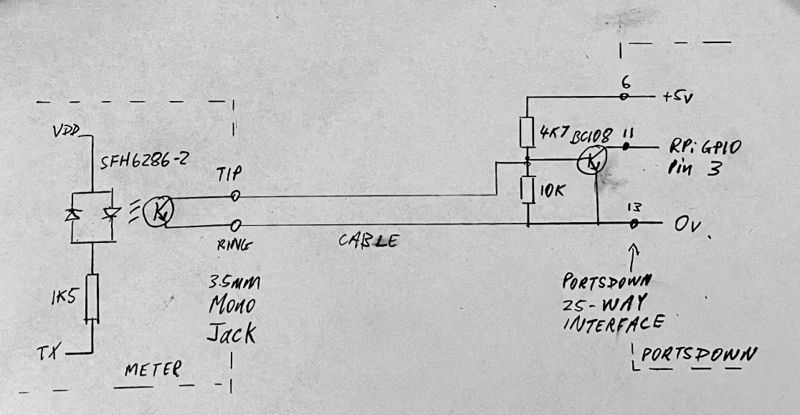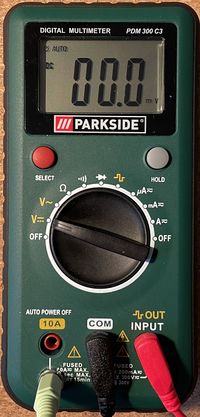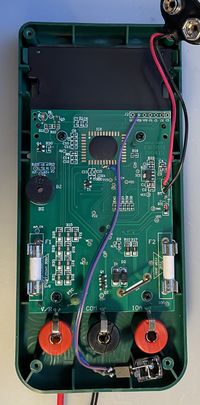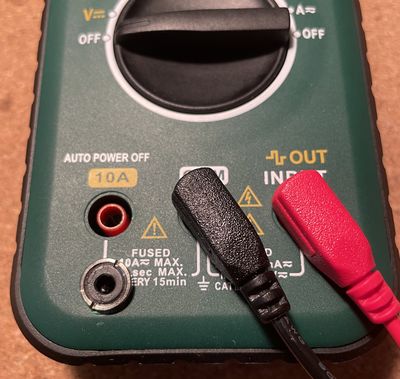Difference between revisions of "Portsdown DMM Display and Logger"
| Line 13: | Line 13: | ||
It is recommended that the opto-isolator is fitted between the test point and Vdd with a 1K5 resistor in series. This means that there is only a marginal increase in supply current. I connected the output of the opto-isolator to a 3.5mm jack socket mounted on the front of the meter. | It is recommended that the opto-isolator is fitted between the test point and Vdd with a 1K5 resistor in series. This means that there is only a marginal increase in supply current. I connected the output of the opto-isolator to a 3.5mm jack socket mounted on the front of the meter. | ||
| − | [[File:Internal Mod.jpg|200px]][[File:Opto socket.jpg| | + | [[File:Internal Mod.jpg|200px]][[File:Opto socket.jpg|400px]] |
| + | |||
| + | The complete circuit of the modification and Portsdown interface is shown below. | ||
| + | [[File:Interface Circuit.jpg|800px]] | ||
| + | |||
| + | Other opto-isolators can be used - mine was sourced from the junk box. | ||
Revision as of 18:43, 23 October 2022
The Portsdown Digital Multimeter display and logger works with a modified Parkside PDM300 C3 multimeter (seasonally available for £11.99 from Lidl) to display and log the meter readings.
Initial proof-of-concept functionality is limited to a large display of the voltage reading. Based on user feedback, further features will be added.
Modification of the DMM
Warning - this modification relies on careful construction and an opto-isolator to keep up to 300V AC away from yourself and your Portsdown Raspberry Pi. DO NOT attempt this modification if you are not confident in your construction abilities.
The DMM has an internal (live at the measurement voltage) test point where an opto-isolator can be connected to pick up a 2400 baud serial data stream. Most published modifications (https://www.mikrocontroller.net/articles/Multimeter_PDM-300-C2_Analyse#Testpunkte and https://github.com/benedikts-workshop/ParksideView) recommend fitting the opto-isolator between the test point and ground. However, this draws current for 90% of the time and significantly reduces the internal 9v battery life.
It is recommended that the opto-isolator is fitted between the test point and Vdd with a 1K5 resistor in series. This means that there is only a marginal increase in supply current. I connected the output of the opto-isolator to a 3.5mm jack socket mounted on the front of the meter.
The complete circuit of the modification and Portsdown interface is shown below.

Other opto-isolators can be used - mine was sourced from the junk box.


